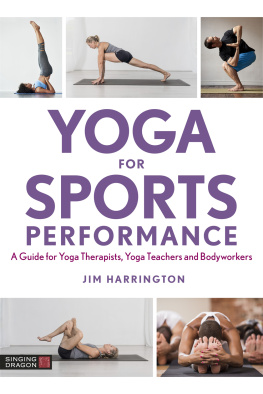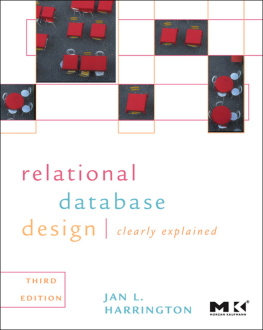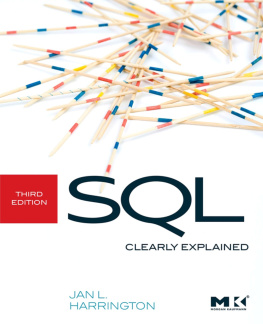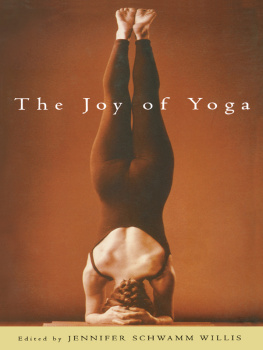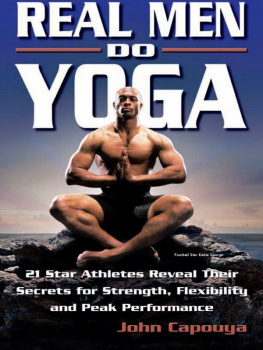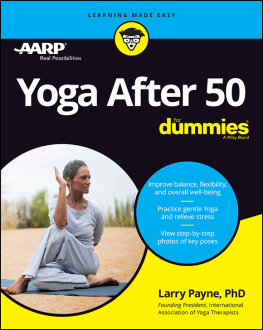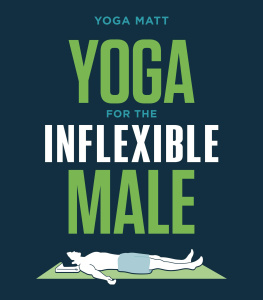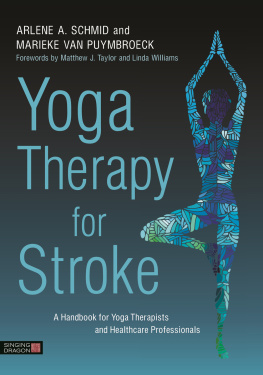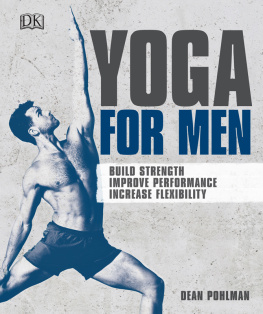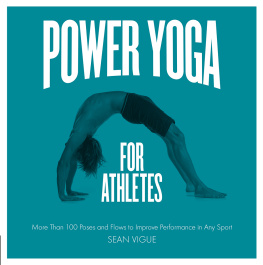Contents

YOGA
for Sports Performance
A GUIDE FOR YOGA THERAPISTS,
YOGA TEACHERS AND
BODYWORKERS
Jim Harrington

Contents
Preface
I shoestring travelled through Asia and found India. This is where my exploration of yoga began. I had been travelling to find new surf spots.
There was a chance encounter with some Indian yoga masters, and I met a strange but radiant holy man. He was a sadhu, a free-range monk, who possessed next to nothing lest it would possess him, and who travelled around living off alms. Today, we would call him an extreme minimalist. He explained that he was on a quest for union with the ultimate reality. He seemed to be having a jolly good time on his mission, and I think that the sheer subversive nature of his lifestyle appealed to me. I had dabbled with yoga, but now it became a daily morning ritual. I used to save money by sleeping out on the roof terrace of the cheapest hotel rather than taking a room. It worked for me because I liked waking up with the sun and going straight into my yoga practice right there.
Imagine the irony when, 20 years later, I was walking the red carpet with Indias sports stars and living in plush five-star hotel suites. I had been hired by the Indian national cricket team in a bid to improve fitness and mental focus. That team won the World Cup in 2011 and became national heroes. I carry the small hope that the presence of the quiet yoga teacher in the support team had something to do with their success. This was followed by two seasons touring India with the Delhi Daredevils in the competitive Indian Premier League.
I did a number of media interviews during this time and the first question was always: How the hell did an Australian end up teaching yoga to Indians? The second question was inevitably: Dont we have enough Indian yoga teachers who could do that job?
I had to be diplomatic, of course. I voiced my profound respect and gratitude for the ancient traditional wisdom of India. I explained that I had learned almost everything from Indian yoga teachers and felt incredibly honoured to be sharing what I knew. But I also tried to communicate that applying yoga to professional sportspeople is a different story altogether, and that I had special skills.
My special skills are a modern Western understanding of the human body and an ability to converse and collaborate with a team physiotherapist about the individual needs of a player. Most of the Indian yoga teachers, like yoga teachers everywhere, operate in a particular framework that is primarily quasi-religious or spiritual, or intent on developing astounding degrees of flexibility.
Indias classical yoga is profound and authentic in a way that is very rare to find in the West, and my return to India reignited a relationship with the older lineages of the Himalaya that I could not have foreseen. Truth is indeed sometimes stranger than fiction. Yoga training globally is no doubt improving every year, and with the accessibility of information online, we are at an amazing stage where the ancient traditions sit alongside modern science. However, the target for many of the yoga teachers that I met was not sporting performance, and in both the East and the West the truth is that many yoga instructors fall short on biomechanics and lack a fundamental understanding of the human body.
This book hopes to remedy that situation. It has been brewing for well over a decade as I have worked first therapeutically and then to adapt yoga with a variety of individuals. I have trained hundreds of teachers and some now specialise in sharing yoga with teams and individuals who have committed to a sporting path. I began compiling lecture notes for an advanced sport-focused yoga course in 2012. The notes just kept expanding until they made a book. My intention is to continue nurturing this program to evolve.
If you are a yoga teacher, personal trainer, coach, physiotherapist or movement therapist, my hope is that this book will offer you skills to work more effectively and safely with athletes. It aims to demystify yoga for the uninitiated. I also bridge a gap with a yoga for sport practice, explaining a selection of physical yoga techniques that are most versatile and useful for athletes. I hope that this may help us to take forward the beautiful tradition of yoga for the benefit of a wide spectrum of people.
Out of respect for and in honour of the ancient yoga masters and sages of old, I dedicate this work to the passing on of their legacy so that current and future generations may experience the wonders of the yoga path. Tirumalai Krishnamacharya, one of the leaders of the modern yoga movement, described yoga in the following way: Another meaning may be even more important: to reach a point we have not reached before. Something that is impossible at this point becomes possible through yoga (quoted in Desikachar 2011, p.18).
PART I
EAST MEETS WEST
A FINE ROMANCE
CHAPTER 1
East Meets West
Who would have thought it possible that a wandering surfer from Sydney would be questioned about yoga on Indian national television. It happened! An Australian wearing the Indian cricket team uniform and speaking about yoga absurd!
As the saying goes, truth is stranger than fiction.
In 2011, not long before the Indian team became World Champions and national heroes by winning the World Cup in a legendary match, I was standing with the team physio watching the team as they practised. The team manager came over. He politely asked, Jim, please come and speak to these men over here. I turned around and the scene made me feel as if I was facing a firing squad. I was in the firing line of a row of cameras and microphones. I took a deep breath, walked over and said good afternoon.
Then the questions started and rather bluntly at that: Why do we need an Australian to teach our players about yoga? Yoga is Indian and surely we have plenty of good yoga teachers here.
I had to acknowledge the irony of the situation. I explained that I had learned yoga in India 20 years earlier in the Himalaya. I had sat with honoured swamis as well as wild-looking sadhus. I explained that the inspiration that started there had been a driving force in my life and that I had the utmost respect for the Indian traditional teachers. My work here with the team was done with a dedication and heartfelt desire to make all of my teachers proud. Diplomacy was paramount as I sensed danger in the row of reporters. I needed to disarm them and show no ego-based reaction that would encourage their line of questioning. It seemed to work, but I had to try to explain the more difficult part: that what I was doing was a little different to ordinary yoga.
So I said it like it was: yoga in India is yoga for yoga. What I was doing was a particular application, a therapeutic and quite specific application of yoga for sports. I had been working with yoga for two decades, studying further and applying the technology of yoga therapeutically. I told them that I had a clear understanding of exactly how yoga should be applied and targeted for the needs of a cricketer and that it is different to a generic form of yoga as most would do it.
This explanation was taken as an insinuation that Indian yoga teachers didnt have the capacity to understand the needs of cricketers or a good understanding of the human body, which brought me back into dangerous territory. Some more challenging questions followed. Which famous athletes had I worked with? I was rescued by one of the coaching team, Paddy Upton. In that moment, it felt as if he stepped in front of me at the firing squad to absorb the journalists bullets.

